-
 Bitcoin
Bitcoin $117900
0.31% -
 Ethereum
Ethereum $3766
0.28% -
 XRP
XRP $3.176
-0.31% -
 Tether USDt
Tether USDt $1.000
0.00% -
 BNB
BNB $795.6
1.51% -
 Solana
Solana $186.8
-1.09% -
 USDC
USDC $0.9999
-0.01% -
 Dogecoin
Dogecoin $0.2353
-1.33% -
 TRON
TRON $0.3226
1.49% -
 Cardano
Cardano $0.8172
-1.08% -
 Sui
Sui $4.178
3.06% -
 Hyperliquid
Hyperliquid $43.05
-3.39% -
 Stellar
Stellar $0.4367
-0.57% -
 Chainlink
Chainlink $18.62
1.47% -
 Hedera
Hedera $0.2828
6.63% -
 Bitcoin Cash
Bitcoin Cash $584.7
5.65% -
 Avalanche
Avalanche $24.81
2.53% -
 Litecoin
Litecoin $112.8
-0.88% -
 UNUS SED LEO
UNUS SED LEO $8.975
-0.08% -
 Shiba Inu
Shiba Inu $0.00001395
-1.07% -
 Toncoin
Toncoin $3.285
-1.05% -
 Ethena USDe
Ethena USDe $1.001
0.01% -
 Polkadot
Polkadot $4.123
0.76% -
 Uniswap
Uniswap $10.49
-0.18% -
 Monero
Monero $326.5
0.14% -
 Dai
Dai $0.9999
-0.02% -
 Bitget Token
Bitget Token $4.576
0.34% -
 Pepe
Pepe $0.00001247
-1.55% -
 Cronos
Cronos $0.1400
3.77% -
 Aave
Aave $295.1
-0.73%
Sideways consolidation after a large volume limit at the bottom? Is it a main force building a position or encountering resistance and falling back?
Sideways consolidation after high volume at crypto chart bottoms may signal main force accumulation or resistance; context and indicators help traders decide.
Jun 09, 2025 at 01:36 pm
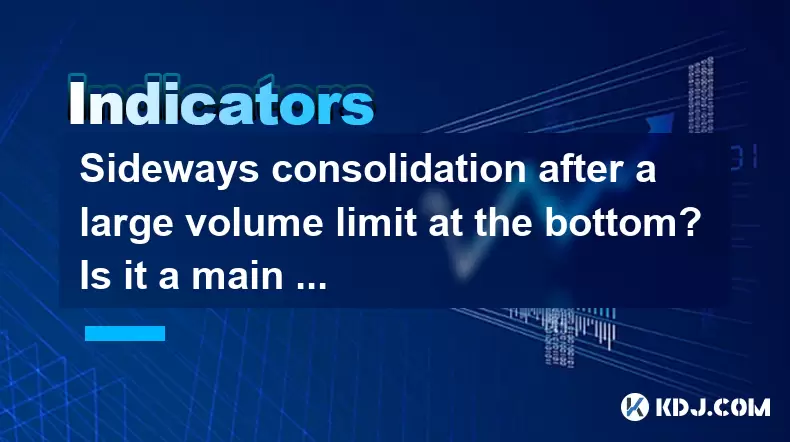
The phenomenon of sideways consolidation following a significant volume at the bottom of a cryptocurrency chart can be a perplexing one. It often leaves traders and investors wondering whether this is a sign of the main force accumulating positions or if it's a case of encountering resistance and subsequently falling back. To delve into this, we need to understand the dynamics of volume, price movement, and the strategic behaviors of market participants.
Understanding Volume and Price Movement
Volume is a critical indicator in the cryptocurrency market. When there is a large volume at the bottom, it typically signifies that a significant number of trades have occurred at that price level. This could be due to a variety of reasons, including panic selling, capitulation, or strategic buying by large investors. The subsequent sideways consolidation suggests that the price is neither making a significant move upwards nor downwards, but rather trading within a narrow range.
Main Force Accumulation
One potential explanation for this pattern is that the main force, often referred to as whales or institutional investors, is building a position. These large players typically have the capital and patience to accumulate assets over time without causing significant price movements. When they see a dip in the market, they may seize the opportunity to buy at a lower price. The large volume at the bottom could indicate their initial entry, and the sideways consolidation might suggest that they are gradually accumulating more without pushing the price up significantly.
Encountering Resistance and Falling Back
Conversely, the pattern could also indicate that the market has encountered resistance after the initial surge in volume. After a large volume at the bottom, if the price fails to break through a certain level and instead starts to consolidate sideways, it might mean that the market has hit a point where selling pressure is strong enough to prevent further upward movement. This could lead to a fall back as the initial buying momentum wanes and sellers take control, causing the price to retreat to the lower end of the consolidation range.
Analyzing the Market Context
To determine whether the pattern is indicative of main force accumulation or encountering resistance, it's crucial to analyze the broader market context. Technical indicators such as the Relative Strength Index (RSI), Moving Averages, and Bollinger Bands can provide insights into the strength of the trend and potential reversal points. Additionally, on-chain data such as transaction volumes, active addresses, and exchange inflows/outflows can offer clues about the behavior of large investors.
Case Study: Bitcoin's 2020 Bull Run
To illustrate these concepts, let's consider a real-world example: Bitcoin's price action during the early stages of its 2020 bull run. In March 2020, Bitcoin experienced a significant drop, reaching a low of around $3,800. This was followed by a large volume at the bottom, suggesting intense buying interest at that level. Subsequently, the price entered a period of sideways consolidation, trading between $6,000 and $10,000 for several months.
During this time, many speculated that main force accumulation was occurring. On-chain data showed that large transactions were increasing, and the number of addresses holding significant amounts of Bitcoin was also rising. This suggested that institutional investors were taking advantage of the low prices to build their positions. Eventually, the price broke out of the consolidation range, confirming the accumulation hypothesis.
Identifying Key Indicators
To differentiate between main force accumulation and encountering resistance, traders should look for several key indicators:
- Volume Profile: A sustained increase in volume at the bottom followed by a decrease during consolidation can indicate accumulation.
- Price Action: If the price consistently finds support at the lower end of the consolidation range, it might suggest that buyers are stepping in to prevent further declines.
- Order Book Depth: A deep order book at the lower end of the consolidation range can signal strong buying interest.
- Market Sentiment: Positive news and sentiment can support the accumulation thesis, while negative sentiment might indicate resistance.
Practical Steps for Traders
For traders looking to navigate such market conditions, here are some practical steps to consider:
- Monitor Volume and Price: Keep a close eye on volume spikes at the bottom and subsequent price movements.
- Use Technical Analysis: Employ tools like RSI, Moving Averages, and Bollinger Bands to gauge the strength of the trend.
- Analyze On-Chain Data: Look at transaction volumes, active addresses, and exchange flows to understand the behavior of large investors.
- Set Stop-Losses and Take-Profits: Establish clear risk management strategies to protect against potential reversals.
- Stay Informed: Keep up with market news and sentiment to contextualize price movements.
Conclusion
The pattern of sideways consolidation following a large volume at the bottom can be interpreted in different ways, depending on the market context and the behavior of large investors. Whether it's a sign of main force accumulation or encountering resistance and falling back, traders must use a combination of technical analysis, on-chain data, and market sentiment to make informed decisions. By understanding these dynamics, traders can better navigate the complexities of the cryptocurrency market.
Frequently Asked Questions
Q: How can I differentiate between accumulation and distribution phases in the market?
A: Accumulation phases are typically characterized by a gradual increase in price within a consolidation range, often accompanied by increasing volume at the bottom. On the other hand, distribution phases might show a gradual decrease in price within a range, with higher volumes at the top. Technical indicators like the Accumulation/Distribution Line and on-chain metrics such as exchange inflows/outflows can also help differentiate between these phases.
Q: What role does market sentiment play in interpreting sideways consolidation?
A: Market sentiment can significantly influence the interpretation of sideways consolidation. Positive sentiment, driven by favorable news or broader market trends, can support the accumulation thesis, suggesting that large investors are taking advantage of the consolidation to build positions. Conversely, negative sentiment might indicate resistance, as traders and investors may be less willing to buy into the market, leading to a potential fall back.
Q: Are there specific cryptocurrencies where this pattern is more common?
A: While the pattern of sideways consolidation following a large volume at the bottom can occur across various cryptocurrencies, it is more commonly observed in major cryptocurrencies like Bitcoin and Ethereum. These assets often attract more institutional interest, leading to more pronounced accumulation and resistance patterns. However, smaller altcoins can also exhibit this behavior, especially if they are experiencing significant market attention or undergoing specific developments.
Q: How can I use this pattern to inform my trading strategy?
A: To use this pattern in your trading strategy, focus on confirming whether it's an accumulation or resistance scenario. If you believe it's accumulation, consider entering long positions at the lower end of the consolidation range, using technical indicators to time your entry. Set stop-losses just below the consolidation range to manage risk. If you suspect resistance, it might be wiser to wait for a breakout or breakdown before making a move, or consider shorting if the price breaks below the consolidation range. Always combine this pattern analysis with broader market analysis and risk management practices.
Disclaimer:info@kdj.com
The information provided is not trading advice. kdj.com does not assume any responsibility for any investments made based on the information provided in this article. Cryptocurrencies are highly volatile and it is highly recommended that you invest with caution after thorough research!
If you believe that the content used on this website infringes your copyright, please contact us immediately (info@kdj.com) and we will delete it promptly.
- Cryptos to Watch in 2025: Punisher Coin, Chainlink, and the Altcoin Arena
- 2025-07-27 18:30:13
- Bitcoin, Altcoins, Rebound: Navigating the Crypto Comeback Trail
- 2025-07-27 18:30:13
- Ethereum, Bitcoin, and Altcoins: A Shift in Crypto Tides?
- 2025-07-27 19:10:13
- Windtree Therapeutics' Bold BNB Strategy: A $520 Million Crypto Play
- 2025-07-27 19:10:13
- Solana, Staking, and Unilabs: What's the Buzz in the Crypto Space?
- 2025-07-27 16:50:13
- VeChain, HBAR, Remittix: Navigating the Crypto Landscape in 2025
- 2025-07-27 17:10:12
Related knowledge
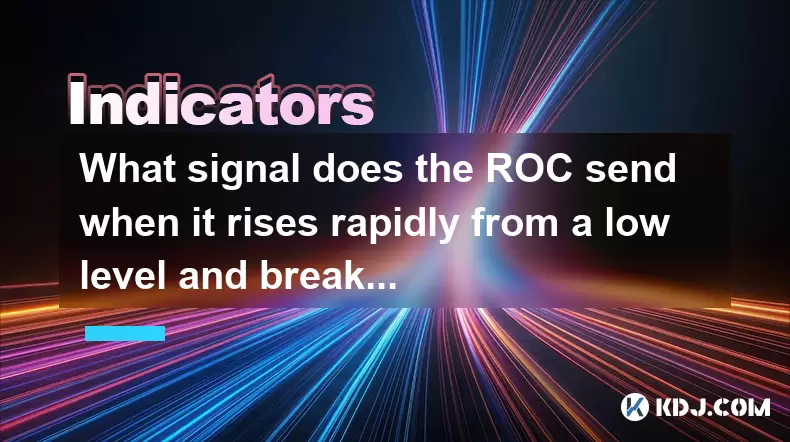
What signal does the ROC send when it rises rapidly from a low level and breaks through the zero axis?
Jul 27,2025 at 10:15am
Understanding the Rate of Change (ROC) IndicatorThe Rate of Change (ROC) is a momentum-based oscillator used in technical analysis to measure the perc...
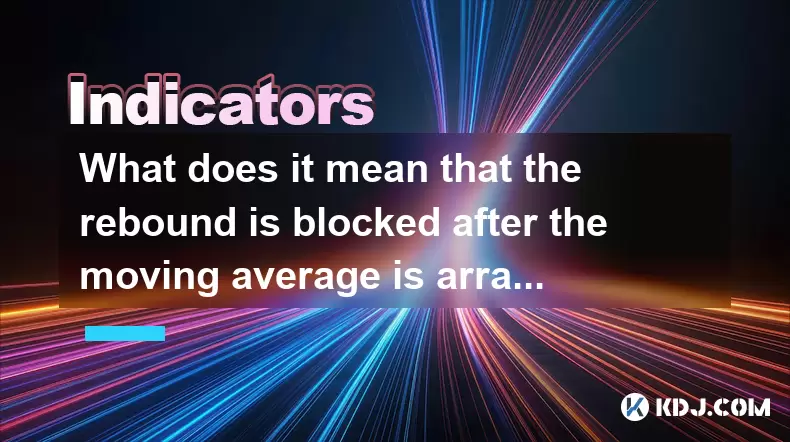
What does it mean that the rebound is blocked after the moving average is arranged in a short position for the first time?
Jul 26,2025 at 10:51am
Understanding the Short-Term Moving Average ConfigurationWhen traders refer to a 'short position arrangement' in moving averages, they are describing ...
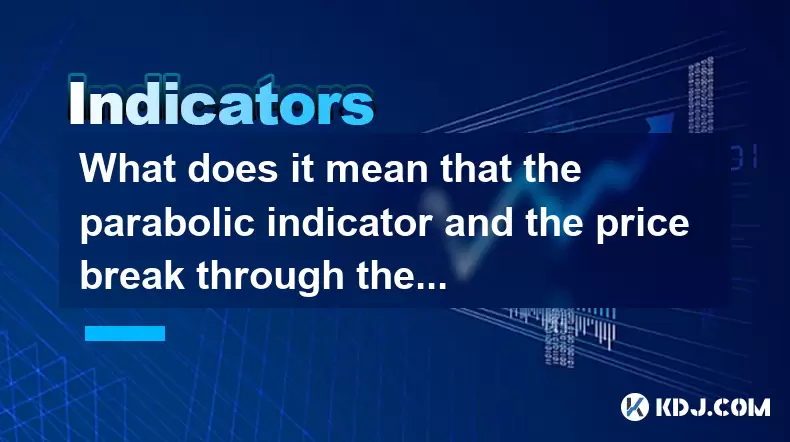
What does it mean that the parabolic indicator and the price break through the previous high at the same time?
Jul 26,2025 at 07:22pm
Understanding the Parabolic Indicator (SAR)The Parabolic SAR (Stop and Reverse) is a technical analysis tool developed by J. Welles Wilder to identify...
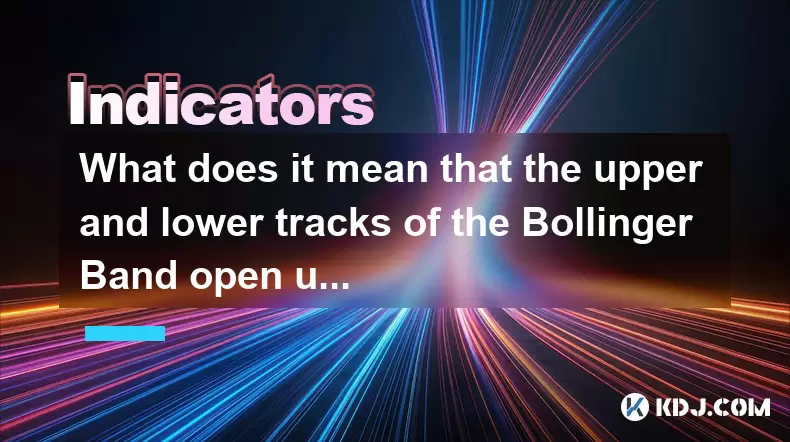
What does it mean that the upper and lower tracks of the Bollinger Band open upward at the same time?
Jul 27,2025 at 02:49pm
Understanding the Bollinger Band StructureThe Bollinger Band is a widely used technical analysis tool developed by John Bollinger. It consists of thre...
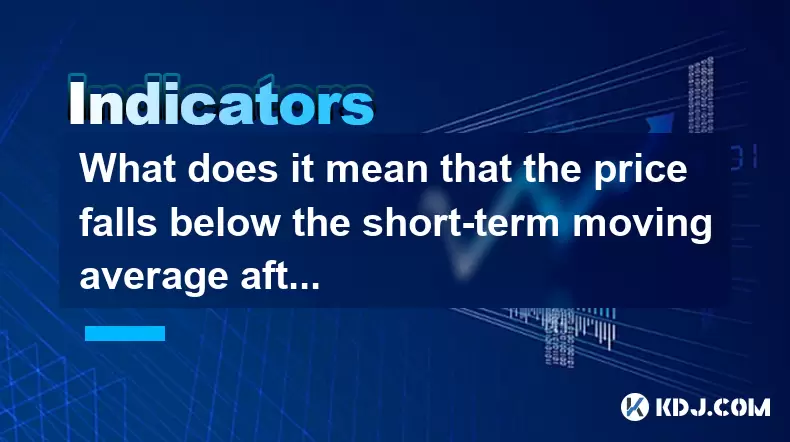
What does it mean that the price falls below the short-term moving average after the RSI top divergence?
Jul 26,2025 at 11:01pm
Understanding RSI Top Divergence in Cryptocurrency TradingThe Relative Strength Index (RSI) is a momentum oscillator widely used in cryptocurrency tra...
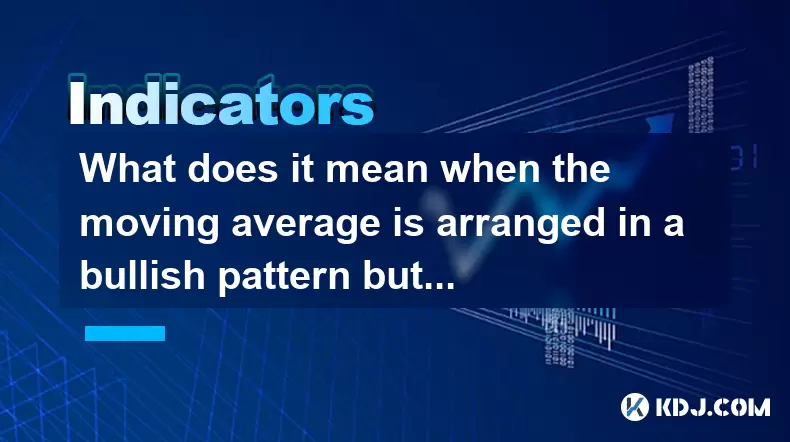
What does it mean when the moving average is arranged in a bullish pattern but the MACD bar is shortened?
Jul 27,2025 at 06:07am
Understanding the Bullish Moving Average PatternWhen traders observe a bullish moving average pattern, they typically refer to a configuration where s...

What signal does the ROC send when it rises rapidly from a low level and breaks through the zero axis?
Jul 27,2025 at 10:15am
Understanding the Rate of Change (ROC) IndicatorThe Rate of Change (ROC) is a momentum-based oscillator used in technical analysis to measure the perc...

What does it mean that the rebound is blocked after the moving average is arranged in a short position for the first time?
Jul 26,2025 at 10:51am
Understanding the Short-Term Moving Average ConfigurationWhen traders refer to a 'short position arrangement' in moving averages, they are describing ...

What does it mean that the parabolic indicator and the price break through the previous high at the same time?
Jul 26,2025 at 07:22pm
Understanding the Parabolic Indicator (SAR)The Parabolic SAR (Stop and Reverse) is a technical analysis tool developed by J. Welles Wilder to identify...

What does it mean that the upper and lower tracks of the Bollinger Band open upward at the same time?
Jul 27,2025 at 02:49pm
Understanding the Bollinger Band StructureThe Bollinger Band is a widely used technical analysis tool developed by John Bollinger. It consists of thre...

What does it mean that the price falls below the short-term moving average after the RSI top divergence?
Jul 26,2025 at 11:01pm
Understanding RSI Top Divergence in Cryptocurrency TradingThe Relative Strength Index (RSI) is a momentum oscillator widely used in cryptocurrency tra...

What does it mean when the moving average is arranged in a bullish pattern but the MACD bar is shortened?
Jul 27,2025 at 06:07am
Understanding the Bullish Moving Average PatternWhen traders observe a bullish moving average pattern, they typically refer to a configuration where s...
See all articles

























































































